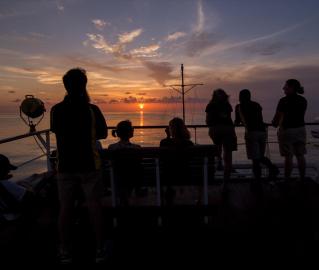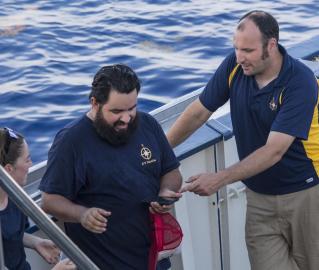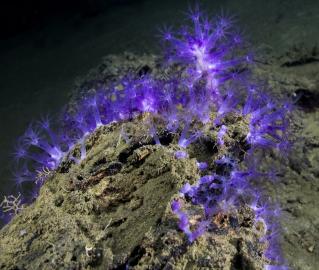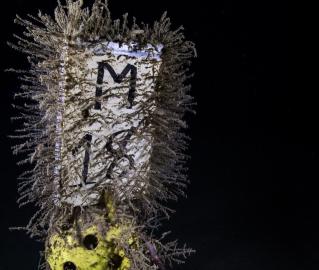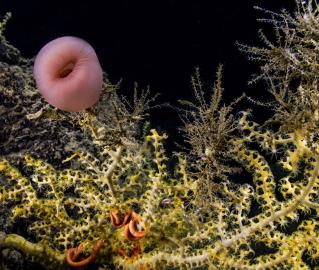Not So Bloodthirsty: An Encounter with a Vampire Squid
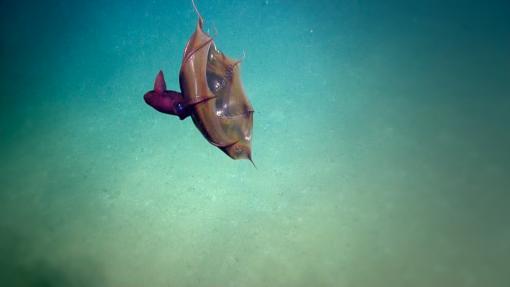
We spotted this Vampire squid recently in the Gulf of Mexico during one of our dives studying deepwater coral with ECOGIG. With a Latin name like Vampyroteuthis infernalis you might expect them to be a particularly interesting creature, and you would be correct: they are the last surviving member of their taxonomic order, and are technically neither squid nor octopods.
Despite the name, it doesn't drink the blood of unsuspecting sea creatures - its bright red eyes and dark color earned it the mythical name. Those eyes are actually the largest proportionally of any animal, relative to its small size. It is also covered in cells called photophores, which produce flashes of light to confuse predators. If that doesn't work, they have a backup method to deter enemies. Although they don't have ink sacs, they can release a large cloud of bioluminescent mucus to distract predators while they make a quick getaway.
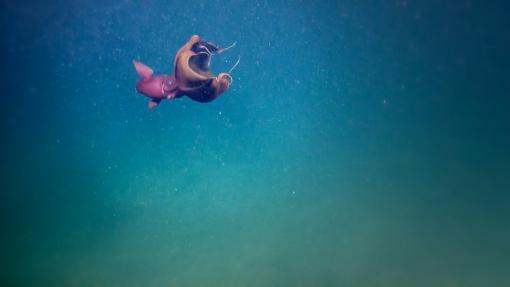
They inhabit one of the most extreme environments on Earth: the deep ocean. They've adapted to the waters of the aphotic zone, far below where the sun can reach, with a very slow metabolic rate and very efficient blood cells (which happen to be blue).
Although not much is known about the behavior of this mysterious creature, they've gained a bit of following in pop culture, and recently picked up the ultimate honor for an animal: immortality as a Pokémon.
You can check out the full clip below, and if you want to know what we'll see next drifting in the blue waters of the Gulf of Mexico, make sure you tune in to our live stream to follow along with the exploration in real time.

ECOGIG
This cruise is part of a larger research program focused on examining the ecosystem-level response to oil and gas in the Gulf of Mexico. The research group leading the cruise is called the Ecosystem Impacts of Oil and Gas Inputs into the Gulf of Mexico (ECOGIG) Consortium, which is made up of scientists from a wide variety of disciplines studying current flow, ocean chemistry, microbial activity, deep-sea coral communities, and everything in between.
